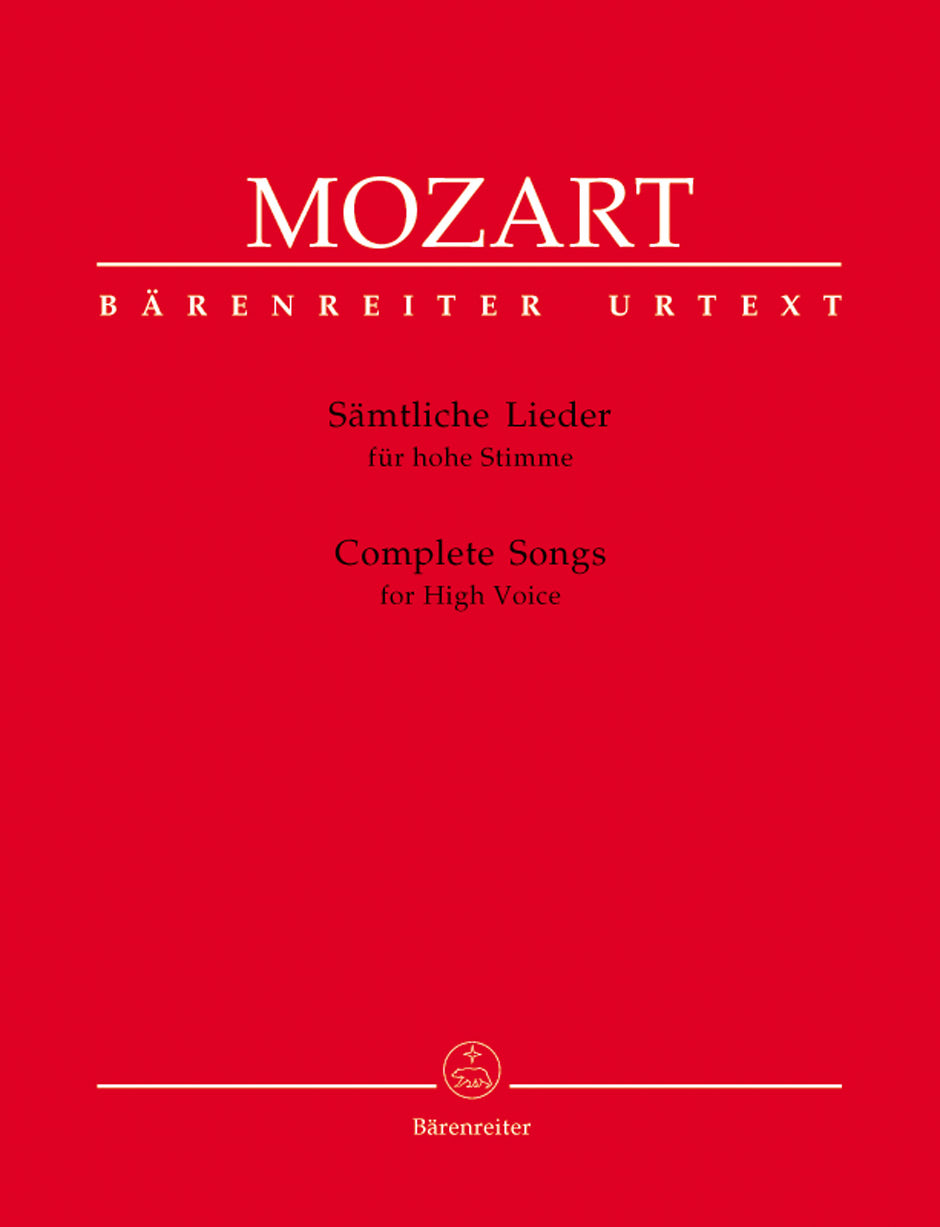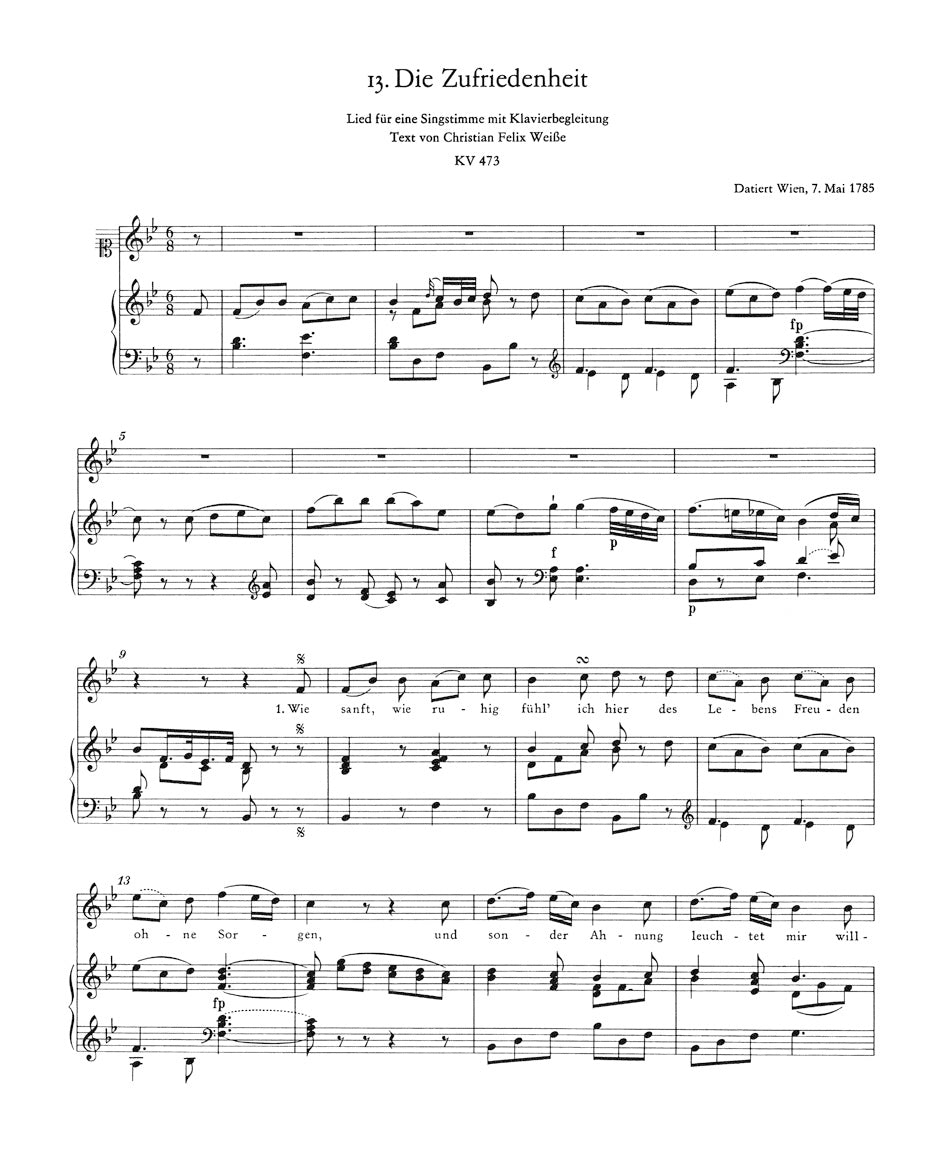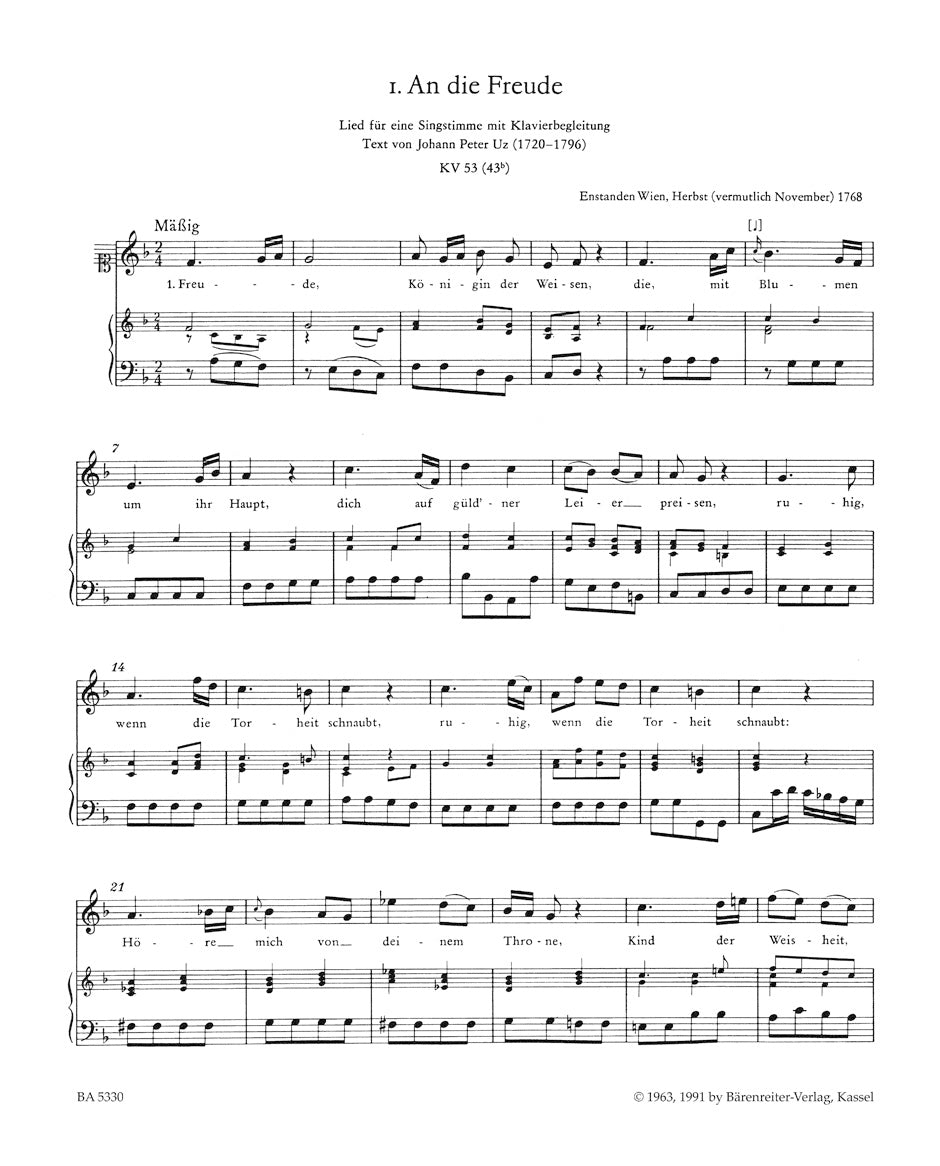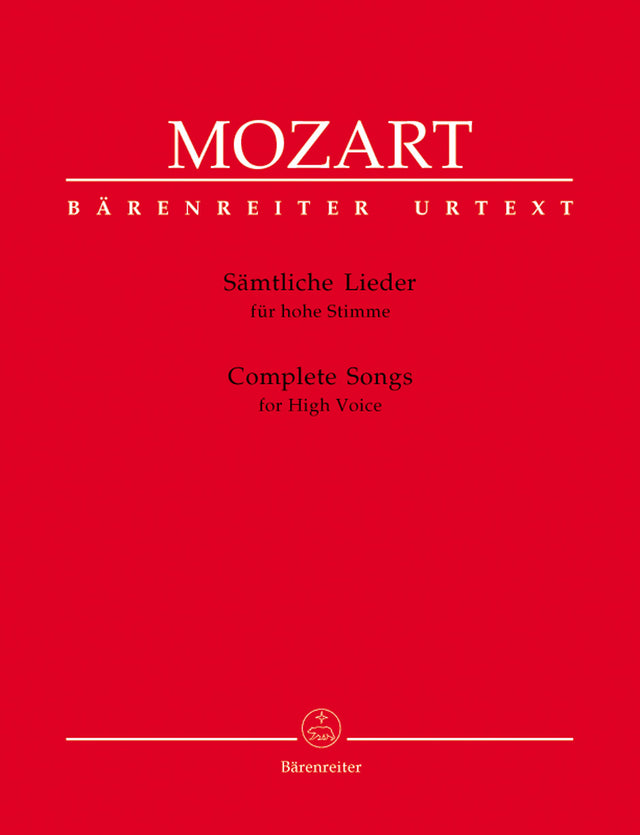Mozart: Complete Songs for High Voice
In stock and typically ships within 1 business day.
- Composer: Wolfgang Amadeus Mozart (1756-1791)
- Instrumentation: Piano, High Voice, Soprano, Orchestra
- Work Language: German
- ISMN:
- Size: 9.1 x 11.8 inches
- Pages: 76
- Urtext / Critical Edition
Description
Mozart's lieder reveal him to be a dramatist in miniature. Even if he failed to cultivate this genre systematically he nevertheless directed his creative powers toward the lied at all stages of his career. His first effort (now lost) was written at the age of six or seven and he took up the genre again and again, at irregular intervals, down to the final year of his life. None the less, Mozart usually chose to write a lied only when there was a special occasion for doing so. Even the preface to the first complete edition of his lieder, published in 1799 by Breitkopf & Härtel, refers to them as "occasional pieces", as does the Leipzig Allgemeine Musikalische Zeitung in the same year. Mozart himself doubtless regarded these ingenious little works as "pieces for friends", and was not disposed to think of them as particularly significant.
Works:
- An die Freude, K. 53 (43b)
- "Wie unglücklich bin ich nit", K. 147 (128g)
- "Auf die feierliche Johannisloge", K. 148 (125h)
- "Oiseaux, si tous les ans", K. 307 (284d)
- "Dans un bois solitaire", K. 308 (295b)
- Die Zufriedenheit, K. 349 (367a)
- "Komm, liebe Zither, komm", K. 351 (367b)
- An die Bescheidenheit ("Verdankt sei es dem Glanz der Großen"), K. 392 (340a)
- An die Ensamkeit ("Sei du mein Trost"), K. 391 (340b)
- "Ich würd' auf meinem Pfad", K. 390 (340c)
- Lied zur Gesellenreise, K. 468
- Der Zauberer (K. 472) (1785)
- Die Zufriedenheit (Christian Felix Weiße), K. 473
- Die betrogene Welt, K. 474
- Das Veilchen, K. 476
- Lied der Freiheit, K. 506
- Zwei deutsche Kirchenlieder, K. 343 (336c)
- Die Alte, K. 517
- Die Verschweigung, K. 518
- Das Lied der Trennung, K. 519
- Als Luise die Briefe ihres ungetreuen Liebhabers verbrannte, K. 520
- Abendempfindung an Laura, K. 523
- An Chloe, K. 524
- Des kleinen Friedrichs Geburtstag, K. 529
- Das Traumbild, K. 530
- Die kleine Spinnerin, K. 531
- Lied beim Auszug in das Feld, K. 552
- Sehnsucht nach dem Frühlinge, K. 596
- Der Frühling, K. 597
- Das Kinderspiel, K. 598
- Ridente la clama, K. 152 (210a)
- Ah! spiegarti, oh Dio, K. 178 (417e)
Publishers use a lot of words to describe what they sell, and we know it can be confusing. We've tried to be as clear as possible to make sure you get exactly what you are looking for. Below are descriptions of the terms that we use to describe the various formats that music often comes in.
Choral Score
A score for vocalists that only contains the vocal lines. The instrumental parts are not there for reference. Generally, cheaper than a vocal score and requires multiple copies for purchase.
Facsimile
Reproductions of the original hand-written scores from the composer.
Full Score
For ensemble music, this indicates that the edition contains all parts on a single system (there are not separate parts for each player). In larger ensembles, this is for the conductor.
Hardcover
Hardbound. Generally either linen-covered or half-leather.
Orchestral Parts
Similar to a wind set, this is a collection of parts. In the case of strings, the numbers listed are the number of copies included, though generally these are available individually (often with minimum quantities required).
Paperback
When publishers offer multiple bindings (e.g. hardcover) or study scores, this is the "standard" version. If you're planning to play the music, this is probably what you want.
Performance / Playing Score
A score of the music containing all parts on one system, intended for players to share. There are not separate parts for each player.
Set of Parts
For ensemble music, this indicates that there are separate individual parts for each player.
Solo Part with Piano Reduction
For solo pieces with orchestra, this is a version that contains a piano reduction of the orchestra parts. For piano pieces, two copies are typically needed for performance.
Study Score
A small (think choral size) copy of the complete score meant for studying, and not playing. They make great add-ons when learning concertos and small chamber works.
Vocal Score
A score prepared for vocalists that includes the piano/organ part or a reduction of the instrumental parts.
Wind Set
For orchestral music, this is a collection of wind and percussion parts. The specific quantities of each instrument are notated.
With Audio
In addition to the printed music, the edition contains recordings of the pieces. This may be an included CD, or access to files on the internet.
With / Without Fingering (Markings)
Some publishers prepare two copies - a pure Urtext edition that includes no fingering (or bowing) suggestions and a lightly edited version that includes a minimal number of editorial markings.





